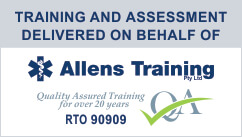1 Day First Aid course – Febrile Convulsions
Simple Instruction has found another great article from The Childrens Hospital at Westmead. At many of my First Aid courses many people have not heard of Febrile Convulsions, this has prompted me to put this article up.
If you would like to learn more about emergency First Aid. Enrol in one of Simple Instructions Apply First Aid or Perform CPR courses being held at the Brookvale Hotel on the 18th of June 2011.
Febrile convulsions
Disclaimer: This fact sheet is for education purposes only. Please consult with your doctor or other health professional to make sure this information is right for your child.
What is a febrile convulsion?
A febrile convulsion (also known as a febrile seizure) is a common medical condition. Approximately 3% of children aged 6 months to 6 years may have a convulsion when they have a fever or high temperature.
A convulsion is caused by a short burst of abnormal electrical activity in the brain. This is when the nerve cells send “mixed-up” signals to each other. These mixed-up signals may lead to a change in the child’s awareness or body movement. Sometimes people use other names for convulsions such as fits or seizures.
What causes a febrile convulsion?
The febrile convulsion or seizure happens when the normal brain activity is disturbed by a fever. It usually occurs without warning. During the seizure your child may:
- become stiff or floppy
- become unconscious or unaware of their surroundings
- display jerking or twitching movements
- have difficulty breathing.
What should I do if my child has a convulsion?
Remember, most seizures will stop within seconds or a couple of minutes without any medical treatment.
- Stay calm.
- Note the time the seizure starts and ends if possible.
- Stay with your child.
- Roll your child onto their side, also known as the recovery position.
- Move away from potentially harmful objects eg furniture with sharp corners.
- Place something soft under your child’s head to stop their head hitting the floor.
- Unless you are giving your child emergency medication (midazolam), never put anything in the mouth of your child – it is impossible for your child to swallow their tongue.
Should I call an ambulance?
Call 000 for an ambulance if:
- It is your child’s first seizure.
- The seizure lasts longer than 5 minutes.
- The seizure occurs in water and your child has trouble breathing.
- Your child also has a head injury.
- Your child’s breathing doesn’t return to normal shortly after the seizure or your child remains blue around the lips.
- You are unsure that your child is safe and recovering normally after the seizure.
Why is my child sleepy after the seizure?
Your child will become tired after the seizure and your child will need time to rest and recover. If your child remains drowsy or difficult to wake after sleep, you should seek medical attention.
What can the doctors do for my child?
Even though the high temperature is usually related to a viral infection, your doctor will need to examine your child to try and determine the cause of the high temperature. Further investigations or blood tests may need to be done to rule out other causes for the fever and convulsion.
Can my child get another convulsion the next time they have a fever?
Yes. The chance of having another febrile convulsion in the following year is 30%, but this means that 70% (or 7 out of 10 children) will not have another seizure. The risk of a second seizure reduces every year and it becomes extremely rare after children turn 6 years old.
What does the future hold for my child?
The outlook for a child with simple febrile convulsions is excellent. There is no evidence of “brain damage” in these children. Your child is at only a very small risk of developing epilepsy in the future if they had a simple febrile convulsion.
What should I do when my child develops fever in the future?
To reduce the fever you can use medicines, such as paracetamol (Panadol, Dymadon or Tylenol) only as directed. Remember that these medications will make your child feel better from the fever but they do not treat the infection that caused the fever. These medicines do not prevent the seizure from occurring. You should take your child to see your local doctor if your child looks unwell, you are concerned about them or if the fever persists.
Is there any treatment available if my child has more frequent febrile convulsions at home?
There is a medication called Midazolam that is sometimes recommended for children who have frequent febrile convulsions or if your child has a history of febrile convulsions that last longer then 5 minutes. Most children do not require this medication. If you would like more information about this treatment you should talk with your doctor.
Are there any other medications available to prevent febrile convulsions?
Yes, however these medications have to be taken every day and they can have unwanted side effects. Because the outlook for children with febrile convulsions is so good, these regular medications are rarely necessary.
![]()
- Regular Paracetamol will not prevent febrile convulsions.
- If your child has a fit stay with them and lay them on their side.
- Call an ambulance if the seizure last longer than 5 minutes.
- You know your child best seek medical attention if you are concerned about your child.
 |  | |
| The Children’s Hospital at Westmead Tel: (02) 9845 0000 Fax: (02) 9845 3489 www.chw.edu.au | Sydney Children’s Hospital, Randwick Tel: (02) 9382 1688 Fax: (02) 9382 1451 www.sch.edu.au | Kaleidoscope, Hunter Children’s Health Network Tel: (02) 4921 3670 Fax: (02) 4921 3599 www.kaleidoscope.org.au |
& Kaleidoscope, Hunter Children’s Health Network – 2005-2011.
